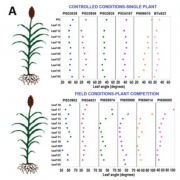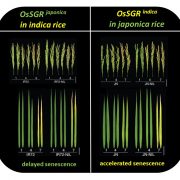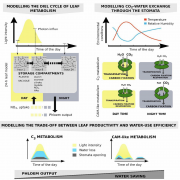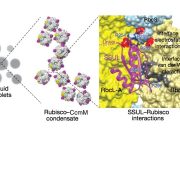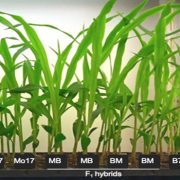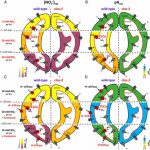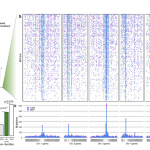Plastocyanin is the long-range electron carrier between photosystem II and photosystem I in plants (PNAS)
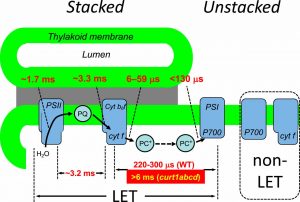 In linear electron transport (LET), electrons are passed from photosystem II to photosystem I, but it has not been clear which of two mobile electron carriers is responsible, plastocyanin (PC) or plastoquinone (PQ). PQ carries electrons from PSII to the cyt b6f complex and PC from there to PSI. Höhner et al. have taken advantage of an Arabidopsis mutant affected in a protein that controls thylakoid shape, Curvature Thylakoid 1 (CURT1). Normally, thylakoids form stacks of grana that are about 400 nm in diameter, but in the quadruple curt1abcd mutant the grana average diameter is 1600 nm. Because PSII accumulates in the grana and PSI in the unstacked stroma, the authors reasoned that the movement of electrons from PSII in the grana to PSI beyond the margin of the grana would take longer in the mutant. The authors then measured PC and PQ-dependent electron transfer (by the clever use of light pulses and conditions) in the mutant and found that only the PC-dependent transport was affected, indicating it is the long-range electron carrier. The authors conclude, “The fact that the PC diffusion becomes much slower if the grana diameter exceeds ∼500 nm suggests that a restriction of the grana diameter is essential to keep PC-mediated long-range electron transport within reasonable rates to allow fast and efficient LET.” (Summary by Mary Williams @PlantTeaching) Proc. Natl. Acad. Sci. USA 10.1073/pnas.2005832117
In linear electron transport (LET), electrons are passed from photosystem II to photosystem I, but it has not been clear which of two mobile electron carriers is responsible, plastocyanin (PC) or plastoquinone (PQ). PQ carries electrons from PSII to the cyt b6f complex and PC from there to PSI. Höhner et al. have taken advantage of an Arabidopsis mutant affected in a protein that controls thylakoid shape, Curvature Thylakoid 1 (CURT1). Normally, thylakoids form stacks of grana that are about 400 nm in diameter, but in the quadruple curt1abcd mutant the grana average diameter is 1600 nm. Because PSII accumulates in the grana and PSI in the unstacked stroma, the authors reasoned that the movement of electrons from PSII in the grana to PSI beyond the margin of the grana would take longer in the mutant. The authors then measured PC and PQ-dependent electron transfer (by the clever use of light pulses and conditions) in the mutant and found that only the PC-dependent transport was affected, indicating it is the long-range electron carrier. The authors conclude, “The fact that the PC diffusion becomes much slower if the grana diameter exceeds ∼500 nm suggests that a restriction of the grana diameter is essential to keep PC-mediated long-range electron transport within reasonable rates to allow fast and efficient LET.” (Summary by Mary Williams @PlantTeaching) Proc. Natl. Acad. Sci. USA 10.1073/pnas.2005832117


